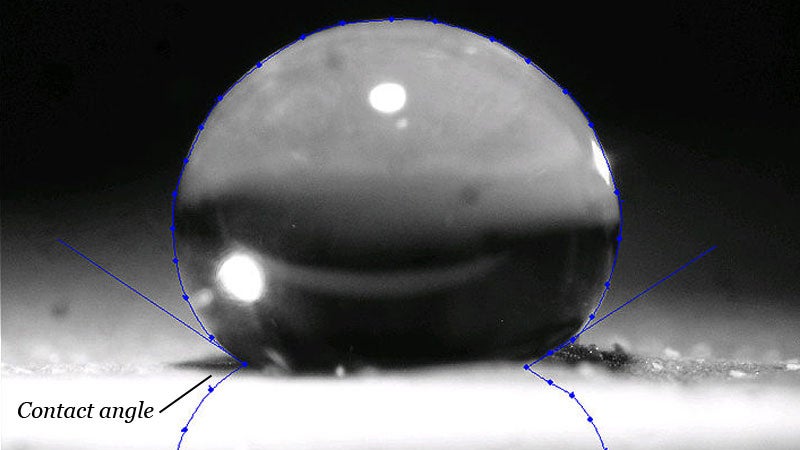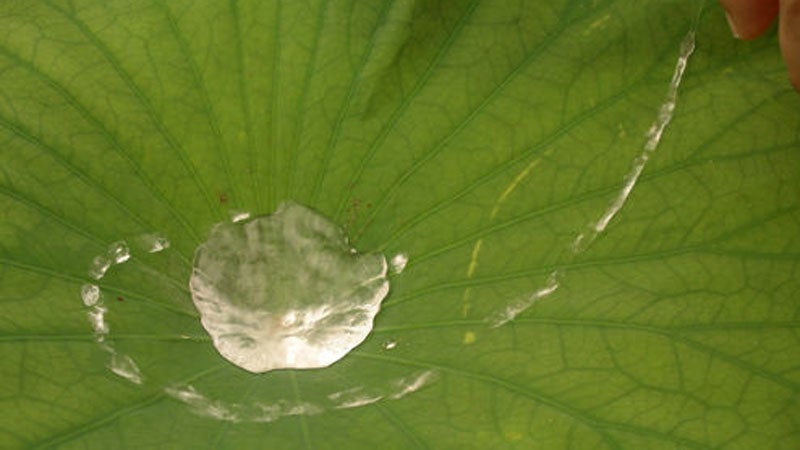Science struck another blow in the battle against the elements this week, as researchers announced the creation of “the most waterproof material ever.” The new “super-hydrophobic” material reportedly repels water 40 percent faster than its predecessors and has a variety of potential applications.
“We believe these are the most super-hydrophobic surfaces yet,” MIT Professor Kripa Varanasi . “For years industry has been copying the lotus. They should start thinking about copying butterflies and nasturtiums.”
The Boston-based research team first studied the lotus leaf, long considered the pinnacle of natural water resistance. Lotus leaves have a high “contact angle,” (see below) upon which only a small area of the droplet ever touches the leaf’s surface. The droplet creates a perfect “pancake” and then quickly springs back up and off the surface.
Varanasi and his team began looking at other surfaces, particularly the wings of the Morpho butterfly and the veins the nasturtium leaves, both of which used tiny ridges to make droplets bounce off faster by splitting them into multiple asymmetric portions.
By applying these principles to their fabric, the team was able to dramatically reduce the fluid’s “contact time.” The team also applied their material to super-cooled metallic surfaces, and found that water bounced off before it had time to freeze, making their discovery potentially invaluable in the construction of aircraft engines, power stations, and wind farms.
As for its application in the outdoor industry, Varanasi believes that the designs could eventually be woven into textile fabrics. “Sportswear, lab coats, military clothing, tents,” he says. “There are a whole range of situations where you want to stay dry.”



